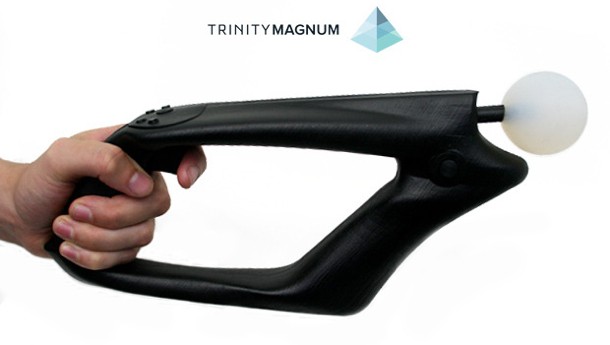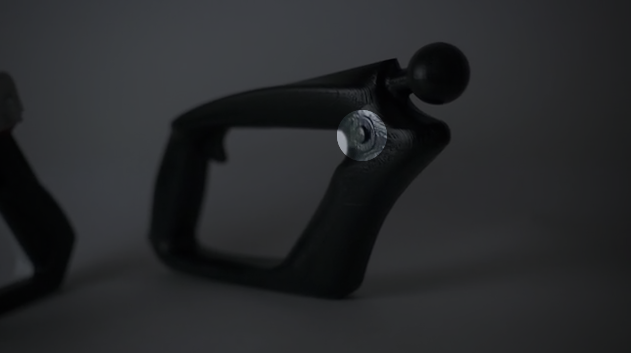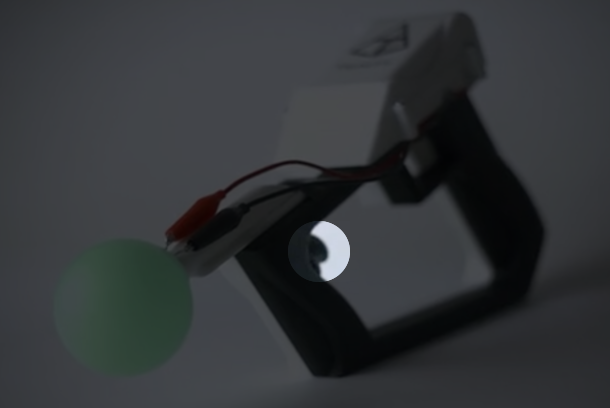Please support Game Informer. Print magazine subscriptions are less than $2 per issue
Trinity VR Launches Kickstarter For Virtual Reality Gun Peripheral

Trinity VR has kicked off its Kickstarter to fund the final development of its virtual reality controller, the Magnum. The device, which looks similar in part to a PlayStation Move, is designed to be tracked independently of the head-mounted display.
In effect, this would allow users to look in one direction and fire in another. We had a brief opportunity to test a Magnum prototype, but because we were operating on an original Oculus Rift kit (without head-tracking), we didn’t get the full experience.
As you can see from the image above, the Magnum is designed to be held comfortably with two hands. Trinity is still conducting weight balancing and refining the button and stick layouts. We saw two different potential layouts.

One offered a PSP-like control disc on the each side right behind the globe (above). The other had a thumbstick protruding from the inner part of the plastic housing (below). I preferred the feel of the former, as the thumbstick option required me to contort my hand and hyperextend my thumb. Unfortunately, the uncomfortable configuration was the only one we could demo in-game.

The Magnum also has a second thumbstick on the top rear, along with four face buttons to mimic those on a standard Xbox or PlayStation controller. The cone, which is used for motion tracking, is extremely similar to that of a PlayStation Move.
The Magnum, like every other motion sensing virtual reality peripheral we’ve used, requires calibration and is, unfortunately, imperfect in its current form. It took a few tries to get it pointing the right way. The demos, which were a simple shooting range and a rail shooter, served as proof of concept.
However, the device is flexible, and can use a variety of cameras for motion tracking, including a PlayStation Eye (PS3 model), the original Kinect, and any webcam supported by OpenCV. Performance will vary based on resolution, field of view, and other technical specifications.
Trinity VR is planning to ship all of its developer units (with the SDK) by December. The company is asking for $60,000 to support final development. Developer kits cost $99, and Trinity tells us that it plans to keep prices similar for retail release.
The success of the Magnum hinges on developer uptake. In order for the device to have any real value, it will need to be incorporated into titles as a control scheme. Until we get a sense for how it will work with a Oculus DK2 (a unit with head tracking via camera), it’s hard to judge it. We’re interested to see how it develops, but that means there needs to be real content that supports the Magnum and not just tech demos.
For more, you can check out the Kickstarter campaign page.
Our Take
Expect to see a number of companies reliant on the success of virtual reality head-mounted displays pop up in the coming years. Ultimately, this is a product that will not succeed or fail based on consumer interest. Trinity needs to sell developers on the Magnum as one of many input solutions.










